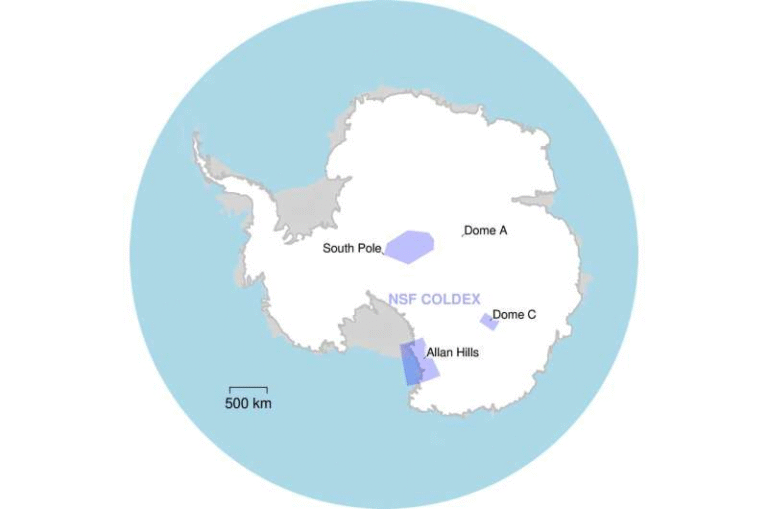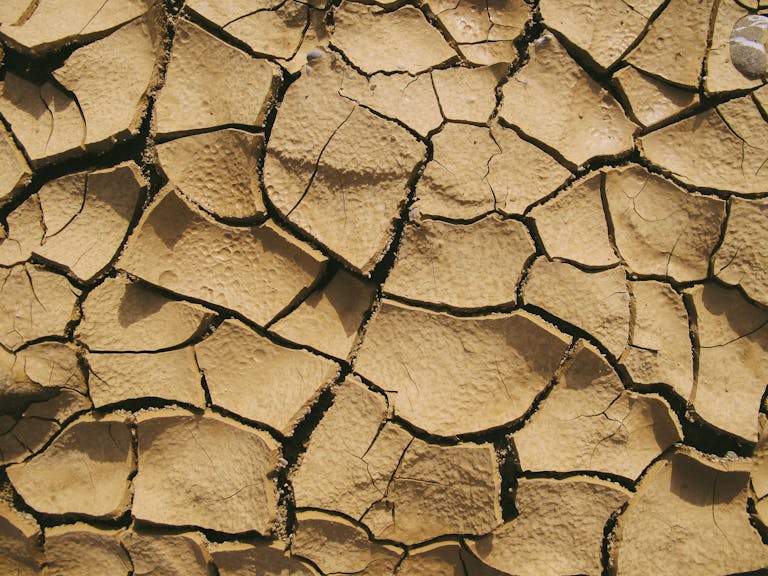Sea Levels Are Rising Faster Than at Any Time in 4,000 Years — Scientists Warn of Accelerating Coastal Risks

A new study led by researchers from Rutgers University has found that modern sea levels are rising faster than at any time in the last 4,000 years, marking a stark acceleration that scientists directly link to climate change. The research, published in Nature on October 15, 2025, combines geological records, advanced modeling, and modern measurements to show that the planet’s oceans have entered an era of rapid expansion unseen since the early Holocene.
This discovery doesn’t just confirm what scientists have long suspected—it quantifies the change in a way that puts today’s rising seas into deep historical context. Let’s go through the key findings, the science behind them, and what they mean for our future.
The Fastest Sea-Level Rise in 4,000 Years
According to the research team led by Dr. Yucheng Lin of Rutgers and Australia’s Commonwealth Scientific and Industrial Research Organization (CSIRO), global mean sea level (GMSL) has been increasing since 1900 at an average rate of about 1.5 millimeters per year. That might not sound like much, but over a century, it adds up to roughly 15 centimeters (6 inches)—and this rate is faster than any century-long period during the past four millennia.
The scientists analyzed thousands of geological records—from ancient coral reefs, mangrove deposits, and sediment cores—to reconstruct how sea levels changed over the last 12,000 years, beginning with the end of the last major ice age and the onset of the Holocene epoch. The data show that for nearly 4,000 years before the Industrial Revolution, the Earth’s sea levels remained relatively stable. It’s only in the past century that a sharp and sustained rise began—one that’s still accelerating.
What’s Driving the Acceleration: Heat and Ice
Two main forces are responsible for this unprecedented increase: thermal expansion and melting ice.
When oceans absorb excess heat from the atmosphere, they expand—just as most materials do when heated. Meanwhile, melting ice sheets in Greenland and Antarctica, along with the world’s shrinking mountain glaciers, are adding vast amounts of water to the seas. Together, these processes are driving a rate of rise that far outpaces natural cycles.
In simpler terms: warmer oceans take up more space, and melting ice adds even more water. What makes this alarming is that the oceans have a long “memory.” Even if greenhouse gas emissions were cut drastically tomorrow, the oceans would continue to rise for centuries as they slowly reach a new equilibrium.
China: A Case Study in Rising Seas and Sinking Land
While rising seas are a global concern, the study focuses heavily on southeastern China, where the situation is especially serious. Many of China’s major coastal cities—Shanghai, Shenzhen, Hong Kong, and others—sit on delta plains. These regions are naturally built on soft, water-rich sediments, making them prone to subsidence, or the gradual sinking of the ground.
Subsidence can occur naturally through geological processes, but in many cities, human activity has made it worse. In particular, groundwater extraction—pumping water out of underground aquifers for drinking, irrigation, or industry—causes the land above to compact and sink.
The study found that up to 94% of observed land subsidence in China’s coastal deltas is caused by human actions. In Shanghai alone, certain parts of the city sank by more than one meter (about three feet) during the 20th century, mostly because of excessive groundwater use. To put that in perspective, that’s hundreds of times faster than the global average rate of sea-level rise.
When you combine a sinking city with rising seas, the risk multiplies. Even a few centimeters of sea-level rise can dramatically increase the frequency and severity of flooding in low-lying deltas.
The Role of Subsidence
Subsidence is not just a Chinese problem. It’s a global phenomenon, affecting cities like Jakarta, Manila, Bangkok, New Orleans, and Venice. In many of these places, rapid urban growth, industrialization, and groundwater withdrawal are accelerating land sinking. When local land levels drop faster than global sea levels rise, flooding becomes a daily reality instead of an occasional threat.
In deltas such as the Yangtze River Delta and the Pearl River Delta, where this study focused, the danger is twofold. These regions are both economic powerhouses and natural floodplains, meaning millions of people and billions of dollars’ worth of infrastructure are at risk. Because delta regions are flat and low-lying, even small vertical changes—a few centimeters of sea-level rise or a few millimeters of land sinking—can have outsized effects.
The researchers used geological records, satellite data, and hydrological models to understand how much of the modern change comes from natural factors versus human impacts. The results are clear: while natural processes play a role, human activity is dramatically accelerating the problem.
How the Study Was Done: Geological Time Meets Modern Science
To trace this long history of sea-level changes, the Rutgers-led team developed an advanced modeling framework called PaleoSTeHM—short for Paleo Sea-level Time Hierarchical Model. This open-source software allows scientists to statistically model ancient environmental data and combine it with modern measurements.
The model integrates multiple components:
- Global mean sea-level signals, representing large-scale ocean trends.
- Regional gravitational and rotational effects, which account for how the redistribution of ice and water affects sea levels unevenly across the globe.
- Slow geological processes like tectonic movement and sediment compaction.
- Local, nonlinear factors, including human-induced subsidence and ocean dynamics.
By merging geological proxies with modern tide gauge and satellite data, the researchers could estimate both long-term trends and short-term changes with higher accuracy. They also included confidence intervals, giving statistical weight to their conclusions.
Their analysis revealed three clear phases of sea-level behavior:
- Rapid rise during the early Holocene (around 10,000–7,000 years ago) as melting ice sheets stabilized after the last Ice Age.
- Stability between roughly 4,200 years ago and the mid-19th century.
- Sharp acceleration beginning between 1825 and 1873 CE, coinciding with the Industrial Revolution and the surge in greenhouse gas emissions.
Why This Matters Globally
Although the study centers on China, the message is universal. Many of the world’s largest and most economically vital cities—New York, Jakarta, Manila, Bangkok, and Mumbai, among others—are built on low-lying coastal plains or river deltas. These areas are especially vulnerable to even modest sea-level changes.
The consequences go beyond local flooding. Rising seas can disrupt global supply chains, displace populations, damage agriculture, and destroy infrastructure. Delta regions, while fertile and rich in resources, are also extremely fragile. Their very geography—flat land near the ocean—makes them both appealing for human settlement and highly vulnerable to the ocean’s rise.
Even a few centimeters of additional sea-level rise can dramatically increase the odds of extreme flooding events. This is not theoretical; we are already witnessing “sunny day floods” in cities like Miami, where seawater backs up through drains during high tides.
Hope Through Action and Adaptation
Despite the alarming findings, the researchers emphasize that there is room for hope—and that local action can make a difference.
Cities such as Shanghai have already begun to address their subsidence problems by regulating groundwater extraction and even reinjecting freshwater back into underground aquifers. Thanks to these policies, the rate of sinking has slowed significantly.
The study also provides vulnerability maps that identify subsidence “hotspots” along the coast. These maps can help city planners and governments prioritize adaptation efforts, such as building sea walls, restoring mangroves, improving drainage systems, and enforcing stricter building regulations.
However, the researchers are clear that local adaptation is not enough. To truly curb future sea-level rise, global emissions must fall. The oceans are vast but not infinite, and their current rate of change is unsustainable.
Broader Context: The Sea-Level Story of the Holocene
For about 10,000 years, during most of the Holocene epoch, Earth’s sea levels remained remarkably steady. This stability helped human civilizations thrive along coastlines, enabling the growth of agriculture, trade, and urban centers. What we’re seeing now represents a sharp break from that natural balance.
Sea-level rise is not uniform everywhere. Regional factors—such as ocean currents, tectonic activity, gravitational variations, and local land movements—can make some areas experience much higher or lower rises than the global average. For instance, parts of the western Pacific have seen rises more than twice the global mean, while some northern regions are still rebounding upward as ice-age glaciers continue to melt away.
Understanding these local differences is essential for designing effective responses. What works in one coastal city might not be suitable for another.
The Big Picture: Learning From the Past to Protect the Future
The key message of this research is simple but powerful: the modern rate of sea-level rise is outside the range of natural variability for at least 4,000 years. This makes it one of the clearest indicators that human activity has fundamentally altered Earth’s climate system.
The study also underscores that subsidence control is as important as carbon reduction when it comes to coastal safety. Even if global warming slows, cities that keep sinking will face increasing risks.
In the coming decades, managing the combined effects of warming oceans, melting ice, and sinking land will define how humanity lives along the coasts. The lessons from China’s deltas are directly relevant to every coastal region worldwide.
Reference
Research Paper: Modern sea-level rise breaks 4,000-year stability in southeastern China
Published in Nature, October 15, 2025.
Authors: Yucheng Lin, Robert E. Kopp, Haixian Xiong, Fiona D. Hibbert, Zhuo Zheng, Fengling Yu, Praveen Kumar, Sönke Dangendorf, Hailin Yi, and Yaze Zhang.





